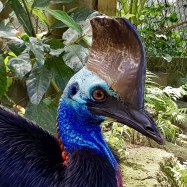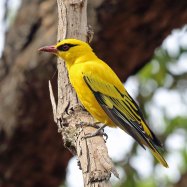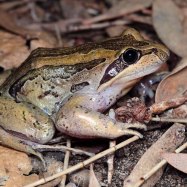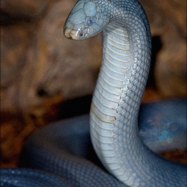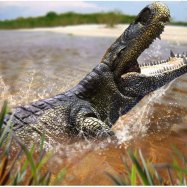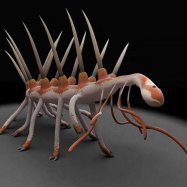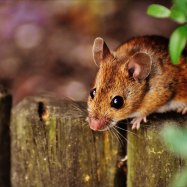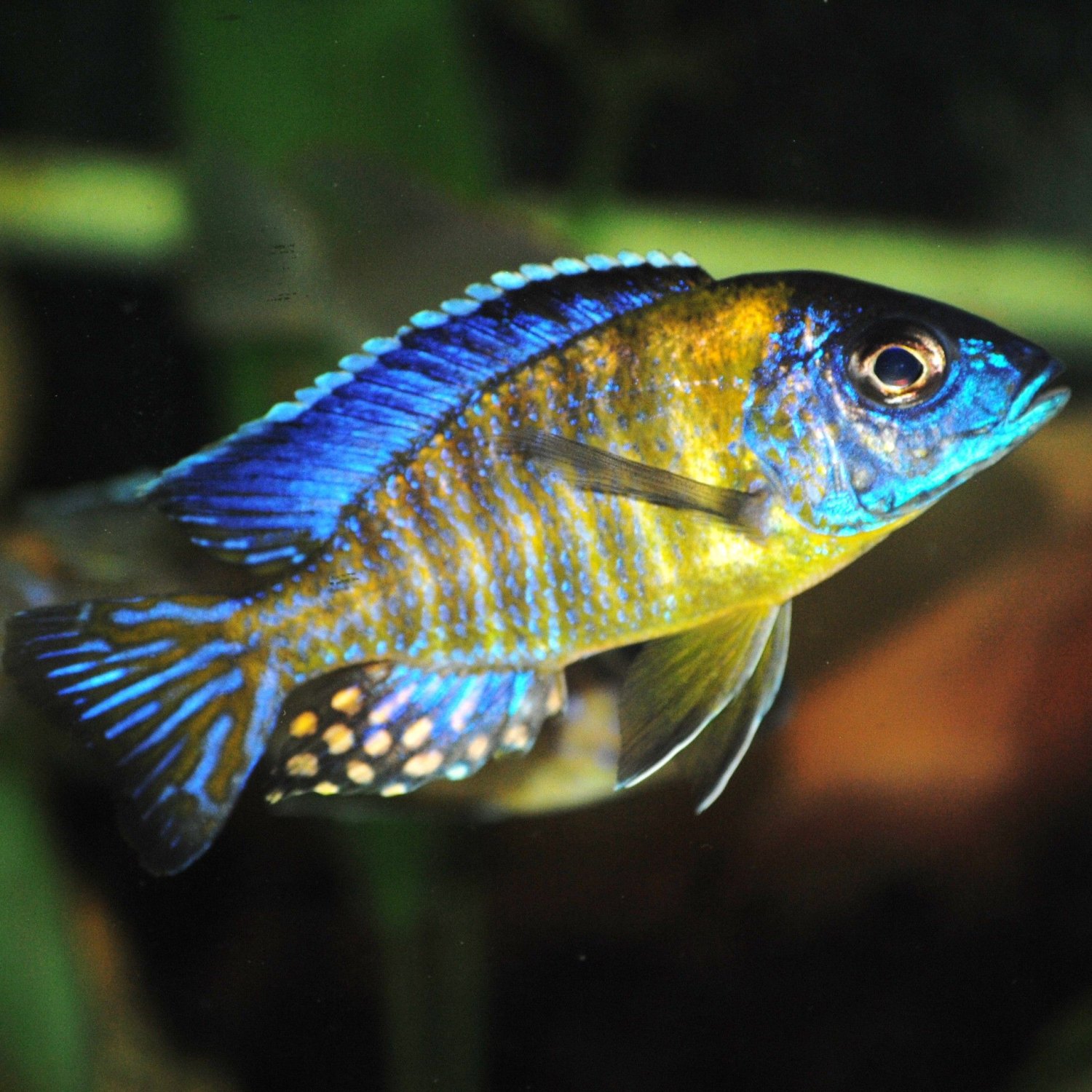
Cichlid
Varies depending on species
Cichlids are a diverse group of fish that come in varied sizes, shapes, and colors. Found in different locations around the world and part of the Cichlidae family, these popular aquarium fish have unique body shapes depending on their species. Some common names for these colorful fish include Angelfish, Discus, and Oscar. Keep them in mind on your next underwater adventure! #Cichlids #AquariumFish #ColorfulFish
Animal Details Summary:
Common Name: Cichlid
Kingdom: Animalia
Habitat: Freshwater
The Fascinating World of Cichlids: A Diverse and Colorful Species
When one thinks of tropical fishes, Cichlids may not be the first species that comes to mind - but perhaps they should be. These fish are incredibly diverse, with over 2400 species identified all over the world. From the warm waters of Africa and South America to the freshwater lakes of Central America, Cichlids are found in a wide range of habitats. Their unique colors, shapes, and behaviors make them one of the most sought after species for both aquarium enthusiasts and scientists alike Cichlid.The Science Behind Cichlids
Scientifically known as Cichlidae, these fish belong to the kingdom Animalia and the phylum Chordata. They are a part of the class Actinopterygii, which includes all ray-finned fishes, and of the order Perciformes, which constitutes about 40% of all fish species. The family Cichlidae is the largest family of freshwater fish, making up approximately 10% of all known freshwater species.Cichlids are characterized by their diverse body shapes and stunning colorations, which vary depending on the species. They can range from small to medium-sized, with some species growing up to three feet in length. Their life span can also differ, with some living only a few years while others living up to 20 years.
The Vibrant World of Cichlids
One of the most spectacular features of Cichlids is their vibrant coloration. These fish come in a wide range of colors, including bright yellows, oranges, reds, greens, and blues. The color of Cichlids can serve many purposes, such as camouflage to blend in with their surroundings or to attract a potential mate Chicken Snake.Their body shape is also unique, with some species having a more elongated and slender body, while others have a rounder, more compact body. This diversity in body shape has helped Cichlids adapt to different environments and has contributed to their survival and success as a species.
Cichlids have also developed specialized features to help them thrive in their respective habitats. Some species have developed strong jaws and teeth to crush and eat hard-shelled snails, while others have long and pointed teeth for catching and eating insects. This omnivorous diet allows Cichlids to consume a wide range of food sources, making them incredibly adaptable and resilient in their environment.
A Global Distribution
Cichlids can be found in diverse regions all over the world, but they are mostly concentrated in Africa, South America, and Central America. Africa is home to the most diverse range of Cichlid species, with over 1200 documented species. These fish are found in a variety of habitats, such as lakes, rivers, and streams.South America is home to over 600 Cichlid species, mostly found in the Amazon River and its tributaries. These fish have adapted to the dark and murky waters of the Amazon, which has resulted in their unique coloration and behaviors.
Central America is home to over 400 species of Cichlids, with many of them being found in the freshwater lakes of Nicaragua and Costa Rica. These fish have evolved to live in these unique habitats, which have resulted in their specific body shapes and feeding behaviors.
The Cichlid Trade
Due to their unique and colorful appearance, Cichlids are highly sought after by aquarium enthusiasts. This has led to the trade and transport of these fish all over the world. Unfortunately, this has also resulted in the introduction of non-native species into new environments, which can have a harmful impact on the native species already living there.Cichlids are also important for the economy in many of the countries where they are found. Commercial fishing and aquaculture of certain species provide a livelihood for local communities. This has led to regulations being put in place to protect certain species and their habitats from being overexploited.
The Impact of Climate Change
Climate change is having a significant impact on Cichlids and their habitats. Changes in water temperature and pH levels can affect the reproductive cycles of these fish and lead to a decline in their populations. The destruction of natural habitats due to human activities can also have a detrimental effect on these fish, as their survival is heavily dependent on a stable ecosystem.The Future of Cichlids
The diversity and adaptability of Cichlids have helped them survive for millions of years, making them a resilient species. However, with the increasing threats of climate change and overexploitation, the future of Cichlids is uncertain. It is essential that we prioritize the conservation of these fish and their habitats to ensure their survival for future generations.In Conclusion
Cichlids may not be the most well-known species of tropical fish, but they are certainly one of the most diverse and fascinating. Their ability to thrive in different environments and their stunning colors and behaviors make them a highly sought-after species. However, with the increasing threats of climate change and overexploitation, it is crucial that we take steps to protect and conserve these fish and their habitats for the future. Let us admire and appreciate the beauty and diversity of Cichlids, not only as aquarium fish but also as an essential part of our natural world.

Cichlid
Animal Details Cichlid - Scientific Name: Cichlidae
- Category: Animals C
- Scientific Name: Cichlidae
- Common Name: Cichlid
- Kingdom: Animalia
- Phylum: Chordata
- Class: Actinopterygii
- Order: Perciformes
- Family: Cichlidae
- Habitat: Freshwater
- Feeding Method: Omnivorous
- Geographical Distribution: Africa, South America, Central America
- Country of Origin: Varies depending on species
- Location: Varies depending on species
- Animal Coloration: Varies depending on species
- Body Shape: Varies depending on species
- Length: Varies depending on species
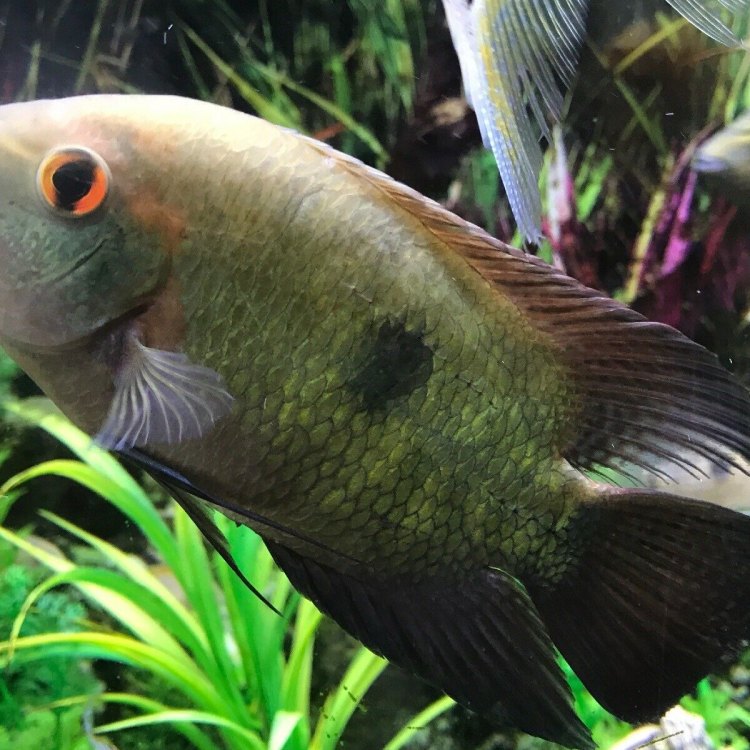
Cichlid
- Adult Size: Varies depending on species
- Average Lifespan: Varies depending on species
- Reproduction: Varies depending on species
- Reproductive Behavior: Varies depending on species
- Sound or Call: Varies depending on species
- Migration Pattern: Varies depending on species
- Social Groups: Varies depending on species
- Behavior: Varies depending on species
- Threats: Varies depending on species
- Conservation Status: Varies depending on species
- Impact on Ecosystem: Varies depending on species
- Human Use: Varies depending on species
- Distinctive Features: Varies depending on species
- Interesting Facts: Varies depending on species
- Predator: Varies depending on species
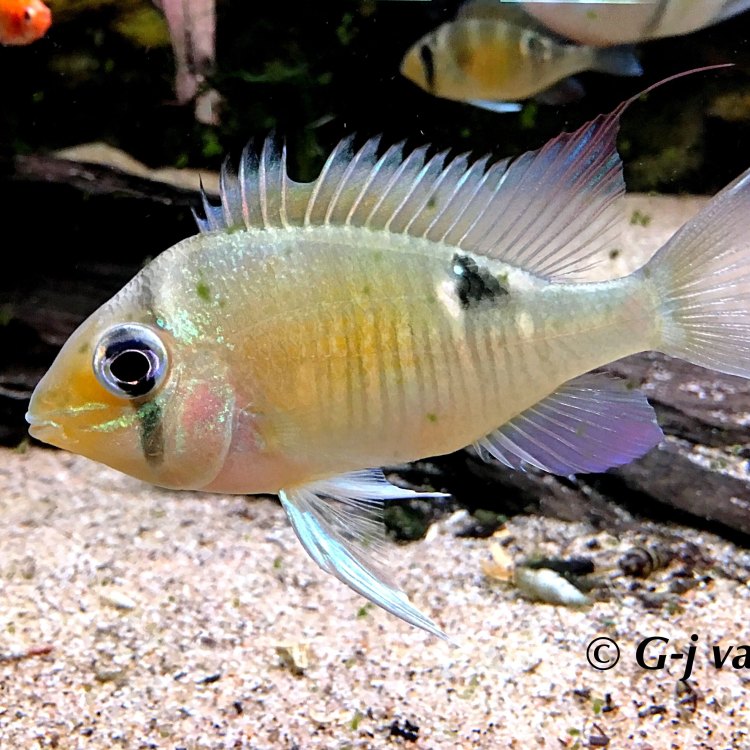
Cichlidae
The Fascinating World of Cichlids: Beautiful Fish with Unique Behaviors
The underwater world is filled with an array of vibrant and fascinating creatures, and one of the most colorful and captivating among them is the cichlid. These freshwater fish have gained popularity among aquarium hobbyists for their stunning colors and interesting behaviors. However, there is more to cichlids than just their appearance. In this article, we will explore the various features and traits of cichlids, from their size and lifespan to their impact on the ecosystem PeaceOfAnimals.Com.Variations in Size and Lifespan
Cichlids are a diverse group of fish, with over 2,000 known species found in lakes and rivers all over the world. As a result of this wide distribution, their size and lifespan can vary greatly depending on the species. Some cichlid species, like the dwarf cichlid, can reach an adult size of only 1-2 inches, while others, like the Mbu puffer, can grow up to 30 inches in length. Similarly, their lifespan can range from 2-3 years for the Lake Victoria cichlid to over 25 years for the angelfish cichlid.Reproduction and Reproductive Behavior
Cichlids have a unique reproductive system that sets them apart from other fish species. They exhibit a wide range of reproductive behaviors, from monogamous pairings to complex social structures with multiple breeding partners. Unlike most fish, cichlids have a specialized structure called an “egg spot” which is located on the anal fin of the female. This spot tricks the male into thinking it is an egg, thereby activating his breeding behavior. The female then deposits the eggs into the male’s mouth where they are fertilized Colossal Squid. The eggs incubate for several weeks inside the male’s mouth until they hatch. This unique reproductive behavior has contributed to the success of cichlids in different environments.Sound and Communication
One of the most fascinating features of cichlids is their ability to produce sounds. While not all species produce sound, some, like the African cichlid, have specialized muscles in their swim bladder that produce low-frequency grunts to communicate with each other. This is believed to be a form of communication between mating pairs or to protect their territory. The different sounds produced by cichlids can even be used to identify different species.Migration Patterns and Social Groups
Cichlids are known for their territorial behavior and are often found in groups with a dominant male, breeding females, and non-breeding members. However, their migration patterns can vary depending on the species and availability of resources. Some migrate during heavy rains to find new sources of food, while others, like the blue acara cichlid, may move to deeper waters during cooler months. Cichlids are also known to form strong social bonds within their groups, and studies have shown that these bonds can last for years, even after the group is dissolved.Behavior in the Wild and in Captivity
Cichlids are known for their aggressive behavior, both in the wild and in captivity. They are fiercely territorial and will defend their habitat against intruders, sometimes to the point of injury or death. In aquariums, it is crucial to provide enough space and hiding spots to reduce the likelihood of aggression between cichlids. Some species also exhibit unique behaviors, like the red jewel cichlid, which can rearrange rocks and substrates in their environment to build nests for breeding. This level of intelligence and adaptability is what makes cichlids a fascinating fish to observe.Threats and Conservation Status
As with many species in the animal kingdom, cichlids face threats to their survival. Habitat destruction, pollution, and overfishing are some of the biggest threats to cichlids in the wild. Invasive species, such as the Nile tilapia, have also been introduced into some environments, leading to competition for resources and interbreeding with native cichlid species. Due to their wide distribution, the conservation status of cichlids varies, with some species being endangered or critically endangered, while others are listed as least concern.Impact on the Ecosystem
Cichlids play a vital role in the ecosystem, both in their natural habitats and in captivity. They are known as “cleaner fish” as they help maintain the balance in their environment by consuming algae and detritus. In aquariums, they serve a similar role and can also help control the population of snails and other pests. However, as cichlids are omnivores, their diet also includes smaller fish, insect larvae, and crustaceans, making them a crucial part of the food chain.Human Use and Interesting Facts
Throughout history, cichlids have been heavily exploited by humans for food, as well as for their vibrant colors, making them popular in the aquarium trade. In Africa, tilapia (a type of cichlid) is a staple in many diets, and they are also commercially farmed in several countries. Some interesting facts about cichlids include that they are one of the few fish species that use tools, such as rocks, to build nests or to break open shells for food. They also have a natural ability to change their colors to adapt to their environment, making them even more mesmerizing to observe.Predators and Protection Mechanisms
In the wild, cichlids face threats from predators such as birds, crocodiles, and even larger fish. To protect themselves, cichlids have developed several survival mechanisms. Some species, like the black-striped cichlid, can change their colors to blend in with their environment, making them difficult to spot. Others have bony plates on their throat that can be used as a shield against attacks. Some species even exhibit parental care, with the dominant male fiercely defending the nest and the eggs from any potential predators.The Beauty and Diversity of Cichlids
To summarize, cichlids are a unique and diverse group of fish with a fascinating array of traits and behaviors. From their size and lifespan to their reproduction and social groups, cichlids are unlike any other fish species. Their impact on the ecosystem, human use, and protection mechanisms make them an essential part of our natural world. Next time you see these beautiful fish, take a moment to appreciate their distinct features and the vital role they play in our underwater ecosystems.
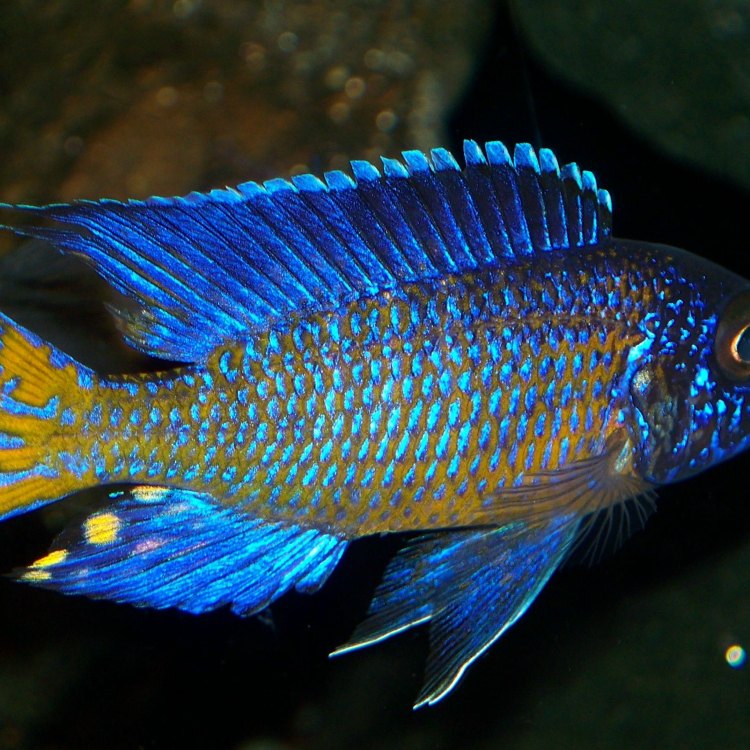
The Fascinating World of Cichlids: A Diverse and Colorful Species
Disclaimer: The content provided is for informational purposes only. We cannot guarantee the accuracy of the information on this page 100%. All information provided here may change without prior notice.

